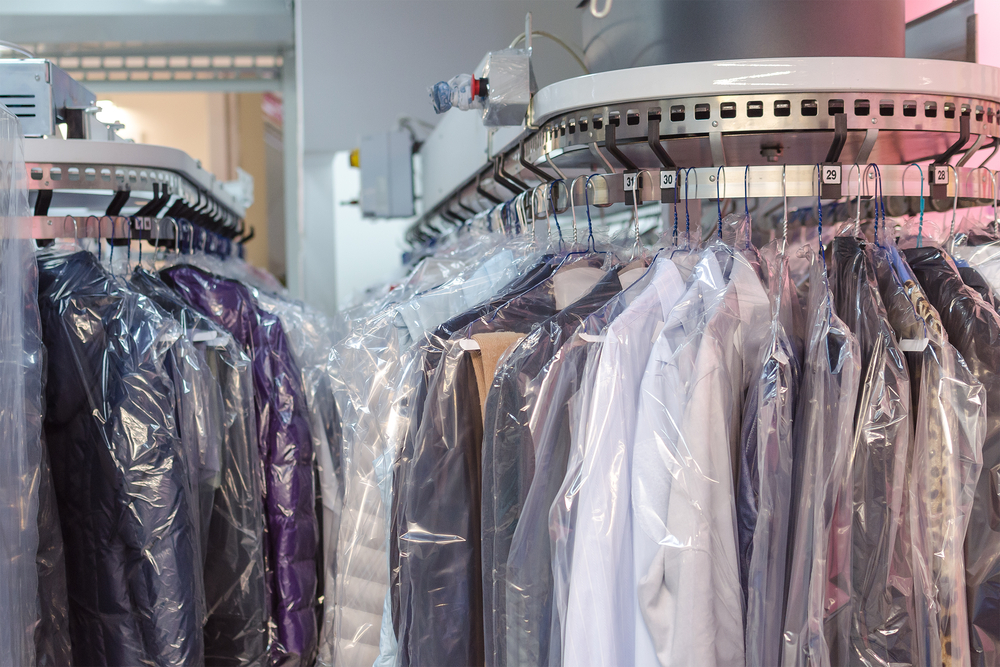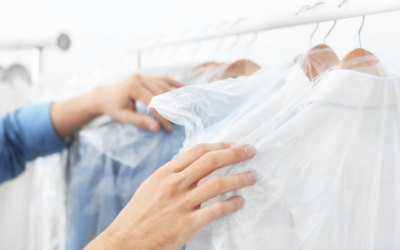Have you noticed the more something gets noticed, the more it becomes misunderstood because people believe more in popular opinions rather than actual facts? As these stories circulate, the line between myth and reality blurs, leading to widespread misconceptions that can be hard to correct.
This is especially true for services and industries we rely on daily but don’t fully understand—like dry cleaning. Despite being an integral part of many people’s clothing care routines, the intricacies of what happens behind the dry cleaning counter remain a mystery to most.
Whether it’s fears about chemical use, worries over fabric damage, or confusion about what can and can’t be cleaned, it’s time to clear the air. We’ll fact-check some of the most common myths about dry cleaning, helping you understand what’s true and what’s not.
Debunking Common Myths in Dry Cleaning
Myth #1: Dry cleaning is only necessary for expensive and fancy items
While it’s true dry cleaning is often recommended for high end garments and delicate dresses, it’s not exclusive to them. Dry cleaning can benefit a wide range of materials, helping to extend the life of everyday items like business suits, blazers, and even some types of sweaters that might not necessarily be high cost. It’s about the fabric and construction, not the price tag.
Myth #2: Dry cleaning uses toxic products
The idea that all dry cleaning involves toxic chemicals is outdated. Traditionally, perchloroethylene, a solvent known for its effectiveness but also its potential health risks, was commonly used. However, the industry has made significant strides in adopting safer, more environmentally friendly alternatives such as hydrocarbon solvents, liquid carbon dioxide, and wet cleaning techniques that use water and mild detergents. While some cleaners still use traditional methods, many have moved towards greener solutions.
Myth #3: Dry cleaning leaves a particular “smell”
Some people notice a distinctive smell on their clothes after dry cleaning, which can be attributed to the solvents used. This is particularly true with perchloroethylene (perc), known for its lingering odor. However, the intensity of the smell can vary depending on the cleaning process and how well the clothes are aired out post-cleaning. Cleaners who use more modern, environmentally friendly solvents often leave little to no odor on garments.
Myth #4: Only clothes with “dry clean only” tags can be dry cleaned
While the “dry clean only” label indicates dry cleaning is the preferred method for a particular garment, it doesn’t mean other items can’t be dry cleaned as well. Many clothes without this tag can benefit from dry cleaning, especially if they are made from natural fibers like wool and silk or are structured with linings and tailored fits. Dry cleaning can often extend the life and appearance of these garments, even if they don’t strictly require it.
Myth #5: All dry cleaners are the same
This belief could not be farther from the truth. Dry cleaners vary greatly in terms of service quality, expertise, and the technologies they use. Factors such as the types of solvents, the equipment, and the staff’s skill level can all influence the outcome of the dry cleaning process. Reputable dry cleaners invest in the latest technologies and continuous training for their staff to ensure superior garment care and customer satisfaction.
Myth #6: Dry cleaning is expensive
While dry cleaning can be more costly than a regular laundry service, it’s important to consider what you’re paying for. The process involves specialized equipment, skilled labor, and often more expensive, eco-friendly solvents. The cost also varies depending on the garment type and location. For items that require special care, such as a wedding dress, a fur or leather coat, or a tailored suit, the cost is justified by the preservation of the garment’s quality and longevity. Therefore, while it can be more expensive up front, dry cleaning can save you money in the long run by extending the life of your clothes.
Myth #7: Dry cleaning can ruin clothes
A common fear is that dry cleaning can damage clothes, but this is largely unfounded when using a reputable dry cleaner. Professional dry cleaners are trained to handle different clothing designs and garment constructions with care. They use specialized solvents and processes designed to clean thoroughly without causing harm. While mistakes can happen, they are rare, and choosing a well-reviewed, experienced cleaner minimizes this risk. In fact, improper home laundering is more likely to ruin clothes through shrinkage, color bleeding, or fabric damage than professional dry cleaning.
Other Specialty Items that Respond Well to Dry Cleaning
While many of us are familiar with taking our suits, gowns, blouses, dresses, and other garments to the dry cleaner, several other items around our homes can also benefit greatly from professional dry cleaning services. These specialty items, ranging from household textiles to unexpected personal belongings, often require the meticulous care and expertise only a professional can provide.
Among the specialty items that can be safely dry cleaned are:
1) Leather and Suede Items
Why Dry Cleaning Works: Dry cleaning is ideal for leather jackets, skirts, pants, and suede shoes or accessories. Professional cleaners use gentle solvents and techniques that clean without stripping the natural oils. Dry cleaning them ensures they remain soft, supple, and looking their best.
2) Draperies and Curtains
Why Dry Cleaning Works: Draperies and curtains are often neglected in regular cleaning routines, but they can harbor dust, allergens, and odors over time. Dry cleaning is an excellent option for these heavy fabrics, as it removes dust and grime without the risk of shrinking or damaging the material.
3) Area Rugs and Carpets
Why Dry Cleaning Works: Area rugs and smaller carpets are exposed to daily wear and tear that can quickly degrade their quality. Dry cleaning provides a thorough cleaning that protects the integrity of these textiles. Whether it’s an antique Persian rug or a modern area rug, professional cleaning ensures they remain in excellent condition, free from dirt, stains, and allergens.
4) Bedding and Linens
Why Dry Cleaning Works: Dry cleaning can handle bulky bedding items, such as comforters, duvet covers, and bedspreads. Its gentle process removes tough stains and deep-seated dirt while preserving the fabric’s quality and color.
5) Specialty Accessories: Ties, Scarves, and Hats
Why Dry Cleaning Works: Accessories such as ties, scarves, and hats often feature delicate fabrics and intricate designs that can be ruined by water and harsh detergents. Dry cleaning is gentle enough to clean these items without causing discoloration or damage. By choosing dry cleaning, you can preserve the appearance and quality of your accessories, keeping them looking new for longer.
Schedule Your Next Cleaning with Columbus Dry Cleaning & Laundry Services!
In an age where information is abundant, it’s surprisingly easy to be misinformed, especially when it comes to choosing the right dry cleaning service in Ohio. At Columbus Dry Cleaning & Laundry Services, we aim to clear up any confusion by offering transparent, exceptional customer service, alongside top-tier dry cleaning services.
Don’t let myths deter you from experiencing the best in fabric care. Schedule your next cleaning with us and experience the convenience and quality that have made us a trusted name in Ohio. Simply send us an email or visit our website to book your service!



